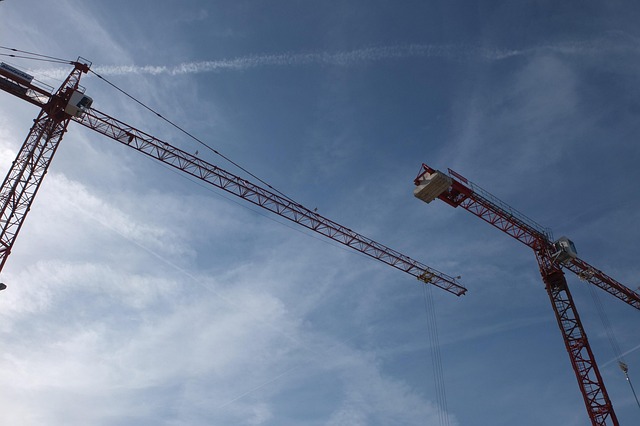Subsurface Utility Potholing is a revolutionary technique for infrastructure maintenance, offering precise identification and mapping of underground utilities. This method, involving small pit excavations, ensures safe inspection and verification, crucial for accurate development planning, especially in urban areas with imprecise traditional maps. By minimizing damage to critical lines, it reduces disruptions and costs associated with emergency repairs, making it a game-changer for efficient, informed construction decision-making, particularly in complex subsurface landscapes.
In today’s digital era, efficient infrastructure development hinges on verified data. This article explores how subsurface utility potholing, a crucial maintenance technique for underground utilities, benefits from precise data. We delve into the enhanced safety and efficiency achieved through verified data integration in planning and mapping processes. Real-world case studies demonstrate the transformative power of subsurface utility potholing guided by accurate, reliable data, setting new standards for successful infrastructure development projects.
Understanding Subsurface Utility Potholing: A Crucial Infrastructure Maintenance Technique
Subsurface Utility Potholing is a critical technique in infrastructure maintenance, offering a comprehensive solution for identifying and mapping underground utilities. This process involves excavating small pits or “potholes” around suspected utility lines to expose and inspect them safely. By employing this method, technicians can accurately verify the location, type, and condition of underground utilities—a vital step in supporting efficient infrastructure development.
The technique is particularly useful for navigating complex urban landscapes where traditional mapping methods may be less precise. Subsurface Utility Potholing ensures that construction projects are informed by exact data, reducing the risk of damaging critical utility lines during excavation. This, in turn, minimizes disruptions to daily operations and lowers costs associated with emergency repairs or service outages.
The Role of Verified Data in Enhancing Safety and Efficiency
In the realm of infrastructure development, ensuring safety and efficiency is paramount, especially when it comes to critical operations like subsurface utility potholing. Verified data plays a pivotal role in this context by providing accurate and reliable information about underground utilities. By leveraging precise, up-to-date data, construction teams can navigate complex underground landscapes with enhanced confidence, significantly reducing the risk of damaging vital infrastructure during excavation.
This data verification process involves cross-referencing multiple sources, including historical records, geospatial databases, and real-time monitoring, to create a comprehensive map of buried utilities. This comprehensive view allows for informed decision-making, ensuring that potholing operations are conducted with precision and care. As a result, verified data not only enhances safety by minimizing the potential for accidents but also streamlines efficiency, enabling faster project completion times without compromising quality.
Implementing Data Verification for Accurate Mapping and Planning
Implementing data verification processes is paramount in ensuring accurate mapping and strategic planning for infrastructure development projects, particularly in identifying and locating critical underground utilities. Subsurface utility potholing plays a pivotal role here, providing precise data about the position, type, and condition of pipes, cables, and other utilities buried beneath the surface. This data is invaluable for avoiding costly damage during excavation and construction activities.
By integrating real-time, verifiable information from potholing surveys into project planning, engineers and developers can create detailed maps that offer a comprehensive view of the subsurface environment. Such precise knowledge aids in informed decision-making, ensuring infrastructure projects are built efficiently, securely, and with minimal environmental impact.
Case Studies: How Verified Data Supports Successful Infrastructure Development Projects
In the realm of infrastructure development, data plays a crucial role in ensuring successful and efficient projects. Verified data, in particular, has proven to be a game-changer, offering invaluable insights that navigate complex challenges. One prominent example is its application in subsurface utility potholing. By leveraging verified data, developers can accurately map underground utilities, minimizing the risk of damage during excavation. This method has been instrumental in reducing costly delays and safety hazards associated with traditional potholing techniques.
Case studies demonstrate that utilizing verified data in infrastructure projects leads to significant improvements. For instance, a recent study highlighted a project where detailed subsurface utility mapping, aided by advanced data verification techniques, resulted in an 80% reduction in unexpected utility strikes during construction. This success story underscores the importance of data verification in enhancing safety, efficiency, and overall project completion times, making it an indispensable tool for modern infrastructure development.
In conclusion, integrating verified data with infrastructure development, particularly through accurate subsurface utility potholing techniques, is a game-changer. This approach significantly enhances safety and efficiency in maintenance projects by providing precise maps and informed planning. As demonstrated through real-world case studies, the benefits of utilizing verifiable data in this process are substantial, ensuring successful outcomes for critical infrastructure developments. By embracing these advancements, we can navigate complex urban landscapes more effectively, fostering a safer and more organized future.
